28 Years Later
Still not a zombie movie.
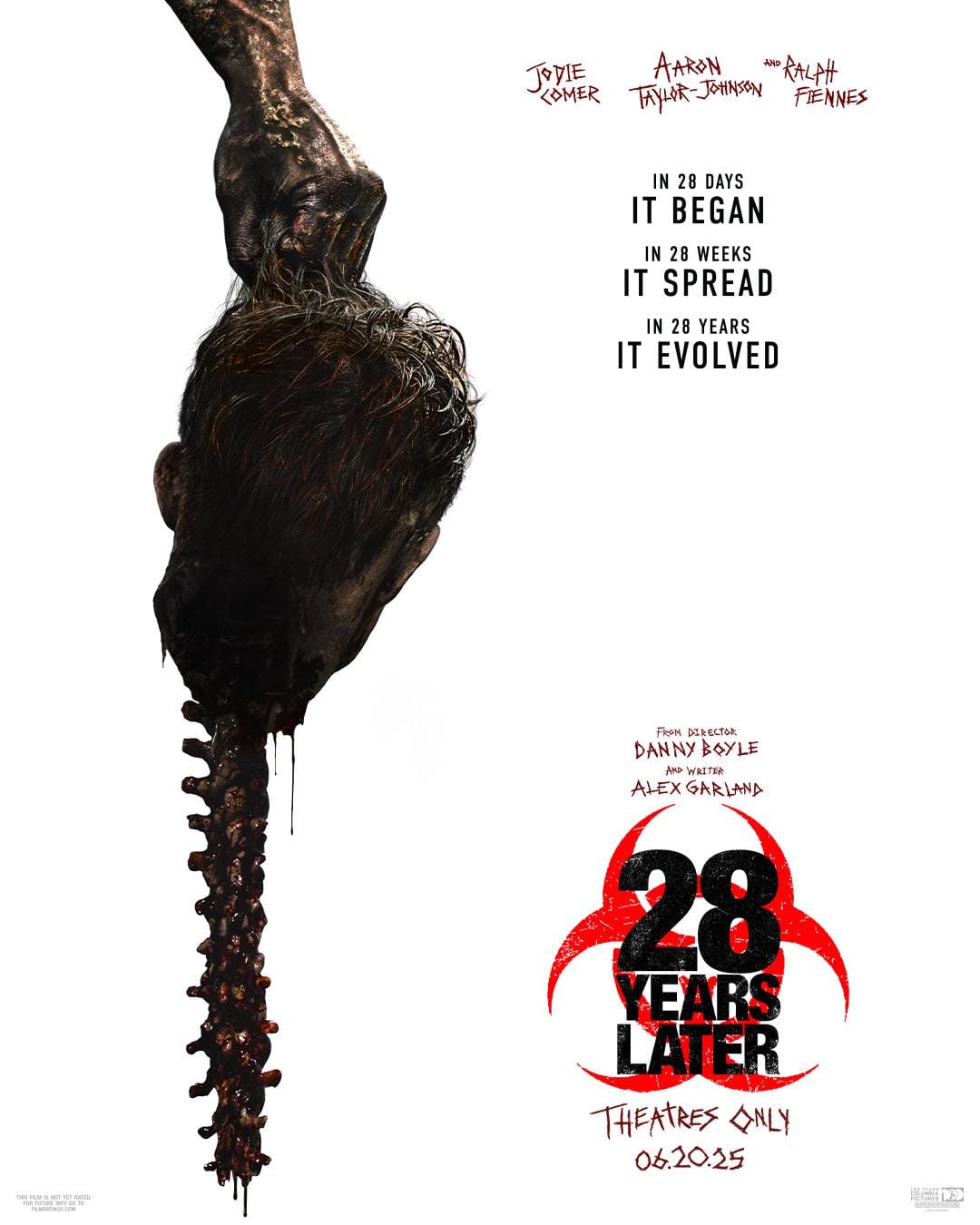
Three decades after the Rage Virus escaped from a bio-weapons lab, spreading its uncontrollably violent infection like a wildfire through the people of Great Britain, there are still those who are living within the island’s quarantine zone, uninfected, and trying to stay that way. When a young boy decides to leave his community and journey into the dark heart of the country that was once known as England, he is unprepared for what he finds waiting there for him…

This is the 450th post here At The End Of Everything.
And for my 450th post, I thought… what better film for me to post about then the latest entry in a well-known post-apocalyptic survival horror outbreak franchise, a genre that is right up my alley? Now, I’m sure you hear that and think…
“That makes sense, Jon. You love zombie movies.”
That’s true, I do. And I love this franchise too. But here’s the thing… the films of the 28 franchise are not zombie movies. I know, I know, but people call these films—28 Days Later, 28 Weeks Later, and now 28 Years Later—“zombie” movies all the time, but they’re wrong. It’s as simple as that. They’re wrong. And the reason why is pretty simple… there are no zombies in these movies. None.
I’ve talked about this franchise before, but the gist of it goes like this…
In Western pop culture, there’s basically two types of zombies. There’s Voodoo Zombies, of course, which are rooted in the religious practices of Afro-Caribbean communities, and are most-likely super xenophobic and racist. But that aside, I think we can all agree, if the Infected in the 28 franchise were zombies… they’re not, but if they were… they aren’t Voodoo Zombies. Which means that they would be the second type. The second type of zombie in Western pop culture is known as the Romero Rules zombies, as the standard was basically set in 1968 with Night of the Living Dead, and has been adhered to within the genre ever since. And the core rule of Romero Rules Zombies, whether they’re fast or slow, smart or dumb, funny or scary, or whatever variation is dreamed up, is that they are always the recently reanimated dead. No matter what else you do with them, when it comes to these kinds of zombies, when a person dies, they get up and kill. The people they kill, get up and kill!
So, the reason the Infected in the 28 franchise aren’t zombies is because… they aren’t dead. The very first film showed us this.
In the 28 franchise, people are infected by direct fluidic contact, just like Romero Rules zombies, it's true, but they don’t then die and reanimate. They’re infected, but they’re alive the whole time. Unlike Romero Rules zombies, they can be killed in all the same ways that any human being can be, and they don’t keep going until the brain is destroyed, and this is because... they’re alive.
Additionally, in this film, we learn two new things… One, the Infected feed and drink water, they gather at watering holes, they hunt animals and eat them. Why? Because they’re still alive, and living things need food and water to survive. And two, the Infected breed. They rut and mate. They give birth to live babies. This shows that not only are the Infected less like traditional zombies because of this, they're actually more like a primates crossed with a pack of wolves, and most importantly, again… they’re alive.
Which means, they’re not zombies.
Did the running Infected in the original film show up at the same time as the idea of running zombies became popular? Yes, that shit can happen, Hollywood often gloms onto stylistic choices that seem new and exciting to them. Deep Impact and Armageddon were released the same summer, y’know. Does this film share several tropes with zombie movies? Yes, that’s unavoidable when you’re telling a story at this end of the genre, and that's fine, but one thing it doesn’t share… is zombies. In these movies, the Infected are just people who should‘ve worn an N95 mask when they were out on the town, instead of doing dumb shit like drinking raw milk, or taking horse de-worming pills, or listening to creepy weirdo dipshits like RFK jr.
Now some folks will hear this and go, “Yeah, well, I don’t care about that, I still call it a zombie movie.” Great. Fuck you too, buddy.
My point is, without a doubt, one of my favorite things about this film is the vindication of having this movie be the thing that finally proves that these movies are not zombie movies at all. My other favorite thing about this movie was that it sees the return of the director and the writer of the original film, Danny Boyle and Alex Garland, and that they brought us a very unexpected and exciting story.
In short, I loved 28 Years Later.
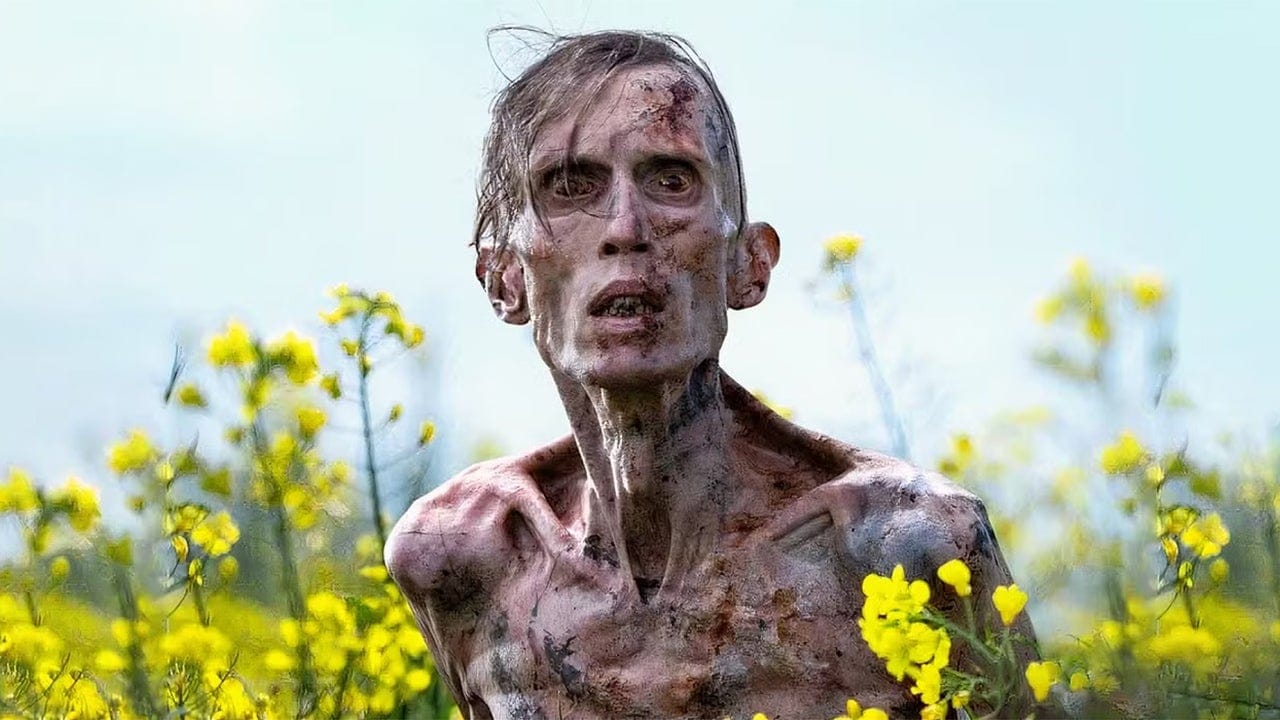
The story thus far…
28 years ago, in the year 2002… Animal rights activists break into a bio-weapons lab to free the caged chimpanzees, and end up accidentally releasing a bio-weapon called the Rage Virus.
28 Days later… a London bike courier named Jim wakes up from a coma to find the city in ruins. Chased by crazed Londeneers infected with the Rage Virus, Jim stumbles upon a group of survivors, including Selena, Frank, and Frank’s daughter Hannah, and ends up joining them on a perilous journey to what he hopes will be safety, but instead sends them headlong into the arms of an enemy even worse than the Infected.
28 weeks later… the Rage Virus has all but annihilated the population of the British Isles. The WHO, led by the U.S. Army, declares that the danger is now past, and American soldiers arrive to restore order and begin reconstruction. Refugees begin to return to British soil, but then it's discovered that one survivor still carries the virus, and it is even more dangerous than before.
28 years ago, in the year 2002… during the initial outbreak of the Rage Virus, a young boy named Jimmy flees his house in the Scottish Highlands as his family are attacked by the Infected. With the Infected chasing him, Jimmy takes refuge in the local church with his father, the minister, who has lost his mind in the face of this new and relentless horror, believing it to be a harbinger of the End Times. And as the Infected pound on the doors and windows of the church, Jimmy's father gives him a cross necklace, and urges Jimmy to run, before submitting himself to the rampaging Infected.
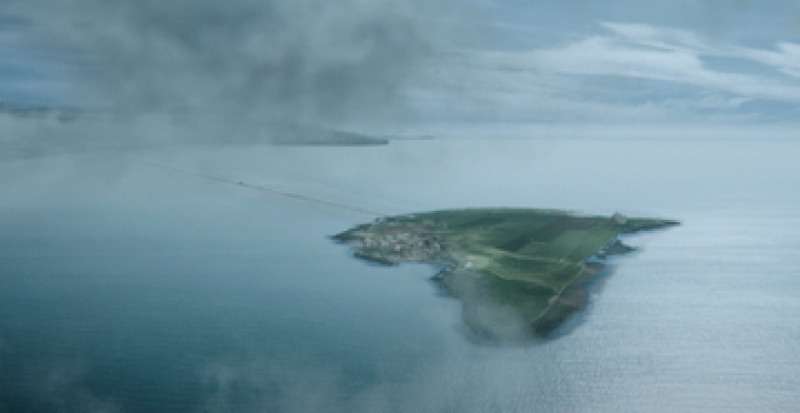
28 years later…
The Rage Virus has been eradicated from continental Europe, and any survivors still on the British Isles remain there under a ruthlessly enforced quarantine. One small community of survivors now lives on Lindisfarne, otherwise known as Holy Island, a tidal island off the northeast coast of Northumberland, England. Its only connection to the mainland is a causeway that is only accessible during low tide.
This is where Jamie, a scavenger and hunter in the community, his wife, Isla, who is suffering from an unknown mentally debilitating illness, and their 12-year-old son, Spike, all live. And today, Jamie and Spike are to cross the causeway over to mainland Britain for Spike’s coming-of-age hunting ritual. When told of this, Isla objects in a suddenly lucid panic, but they manage to calm her down before setting out for the day.
On the mainland, armed with English Longbows, the pair find a couple of slower Infected, and at Jaime’s urging, Spike dispatches them, reassuring his son that the infections takes their souls and they’re no longer human. Then, while scavenging an old farmhouse, they find an infected man tied up, hanging from the ceiling, and branded with "Jimmy.” This is obviously fucked up and a huge red flag, but as they go to leave, they are spotted by a roaming pack of Infected led by one huge Infected man. Jimmy calls that Infected an "Alpha,” and tells Spike this is something that happens sometimes when a person is infected. The virus acts like steroids, making that person bigger and stronger, harder to kill, and more intelligent than most of the rage-blinded Infected. In short, Alphas are very dangerous.
This one likes to pull people’s heads from their bodies.
They are forced to shelter overnight in the attic of the old farmhouse as the Infected rage about below. From this vantage point, they can see the distant sea, where foreign boats patrol, maintaining the quarantine. Spike also spots a distant bonfire further inland, and Jaime tells him that’s the bonfire of Kelton, and then tells him of the time he encountered the man years ago, and the pile of bodies he was burning. Later that night, a massively overpopulated herd of deer, shaking the very Earth as they thunder past, cause the farmhouse to suddenly collapse, and Jimmy and Spike are forced to run for home with the Alpha and its pack right on their heels. Having exhausted all their arrows, Jaime and Spike splash across the partially submerged causeway, the Alpha quickly gaining on them, until the village sentries manage to take it down with a fiery bolt from their ballista.
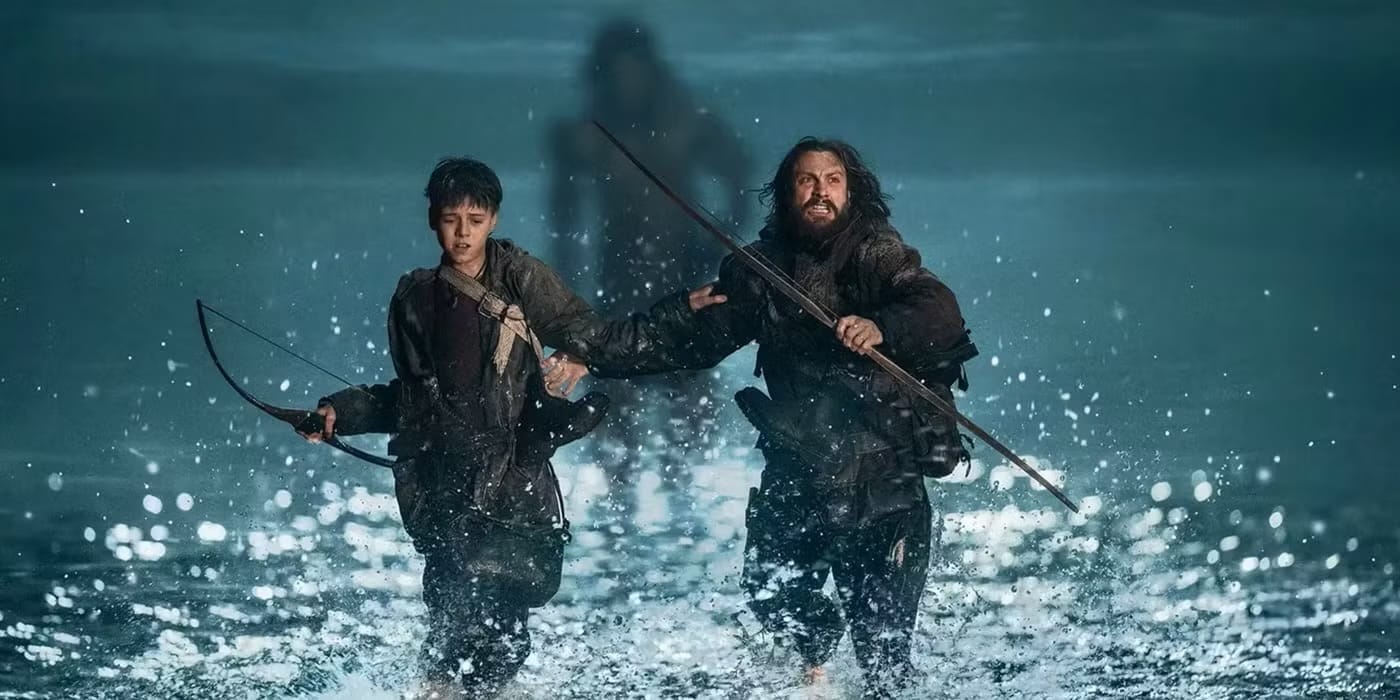
The village throws a party for Spike to celebrate his first kill.
Spike is still reeling from the terror of the trip, and becomes upset at Jamie's embellishment of his son’s prowess, so he leaves the party early, only to discover Jamie's affair with Rosie, the village schoolteacher. Back at home, he discusses the fire with their family friend Sam, an old man who clearly remembers the world before the Rage Virus, who tells Spike that Kelton was once Dr. Ian Kelton. The next morning, Spike angrily confronts Jamie over his infidelity, and also because a real Medical Doctor exists on the mainland, and yet Jaime has never taken Isla to see him. Jamie insists that it’s too dangerous, both from the Infected and also from Kelson, who is a dangerous lunatic.
Unconvinced, Spike escapes the island with Isla.
After that, there’s a lot of trouble.
The Infected are everywhere, and there's more Alphas amongst them Plus, they meet a Swedish Navy seaman named Erik Sundqvist, who is the sole survivor of a NATO quarantine patrol boat that sank, who joins their expedition for a time, but is unprepared for the reality of life in Great Britain now. They also come across an pregnant Infected woman, and helps deliver her uninfected baby girl. And all of this happens before they can even make it Dr. Kelson, dwelling in his palace of bones.
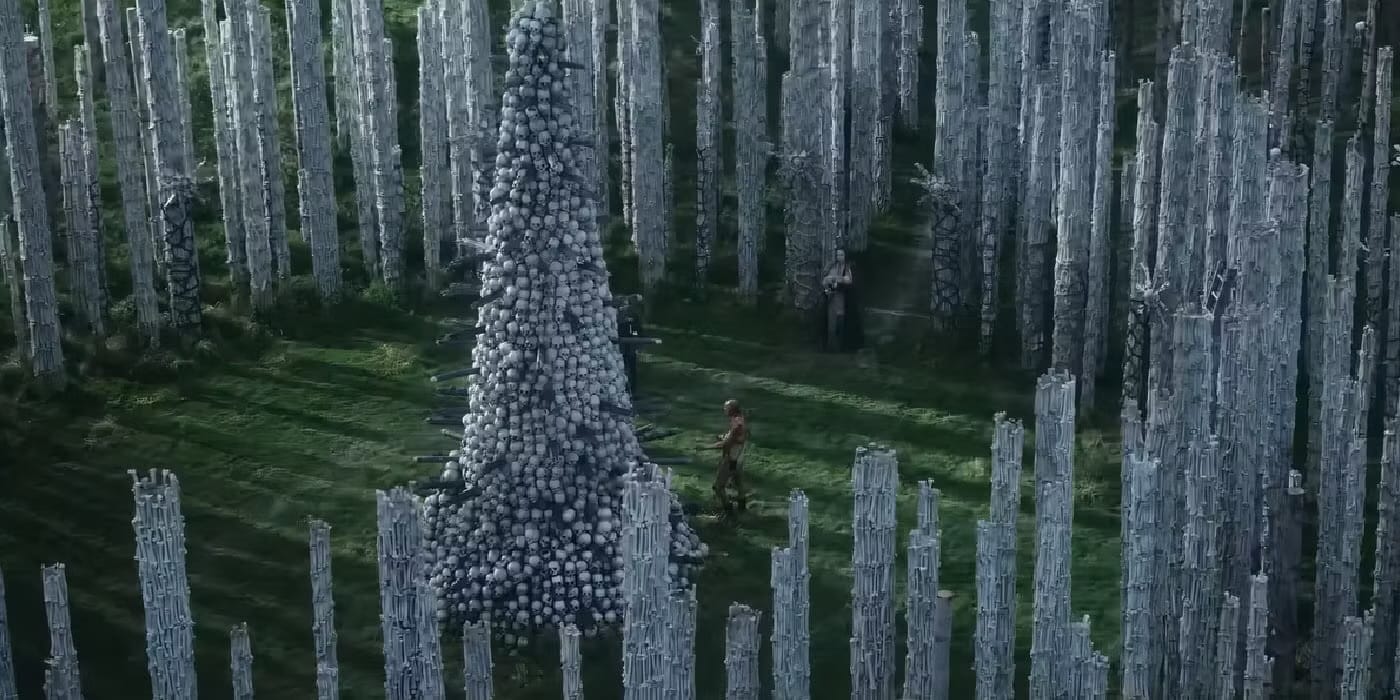
In the end, Isla and Spike both decide their own fates, out in the bloody wooded wilds of the place that was once known as England, and set out to find themselves, as the rising tide keeps a despondent Jaime from going after them.
28 days later… as Spike is pursued by a pack of Infected, he is rescued by the appearance of a strange group of tracksuit-clad weirdos, all stylized after the UK pop culture personality Jimmy Savile, and is then greeted by their leader, a man known as Jimmy, who wears an inverted cross necklace.
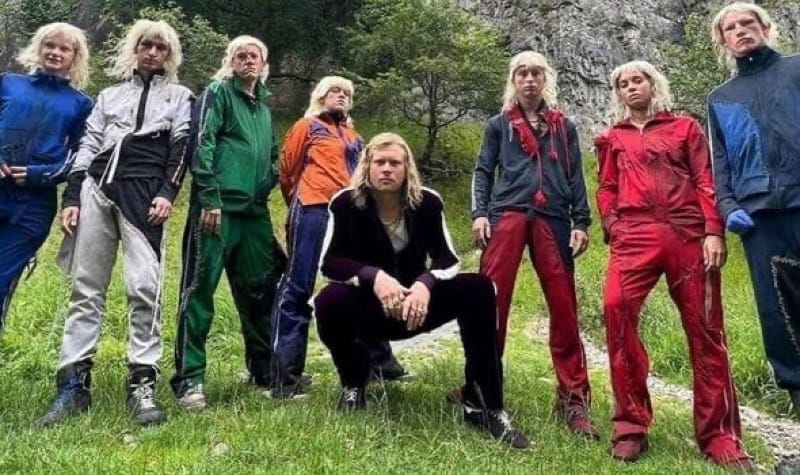
End credits…
28 Years Later is the first film in a proposed trilogy, something which becomes clear as you’re watching it when the story suddenly ends and the end credits begin. It's amazing, and most of all, it definitely leaves you wanting more.
Also, I’m sure this film pissed off a ton of people.
That’s too bad, because when a film doesn’t do what the audience expects it to do, people call it “divisive“ and they almost never get over that. Like The Last Jedi, for example, or the people who still rage about Game of Thrones, because of Ned, or Rob, or the Red Viper.
And as a result, they miss out on something good.
But worst of all, because this film is “divisive,” from now on, until an asteroid, COVID, or white supremacy finally wipes us all out, whenever this film comes up, we’ll be forced to listen as some rando triggered nerd dives into their always at the ready monologue, which is just some tired rip-off variation of a worn-out, all-too-common YouTube rant whining “why did Jaime take Spike across the causeway in the first place?” or “why didn’t they come back with supplies?” or “why didn’t they take more arrows?” or whatever smooth-brained nonsense they decided to hyper focus on. And even though it’s easy to explain all of that kind of shit, both within the text and meta-textually, it won’t matter, because they’re not interested in that, they’re not interested in understanding, they’re just mad because what they really wanted is for the film to do something else, and too bad, so sad, the film refused.
So, this is a perfect illustration of how, when it comes to experiencing art, your own expectations are just blinders, and how you need to let go of all the shit that you imagined in your head before the lights go down, that you need to forget it all and go in with an open mind. Do that, and you can be rewarded, like you are here, with this fascinating, fun, and frankly incredible total subversion of expectations. Because let me assure you, my friends, whatever you might be expecting here, this film very determinedly, and maybe even deliberately, does the exact opposite.
This is very freeing, at least as far as cinematic experiences go. It’s unexpected, shocking, delightful, both in the way the film presents itself, as well as how it plays off expectations, which makes it a fun watch. But at the same time, the filmmakers’ deliberate flaunting of expectations is not a gimmick. They didn’t come here to just wreck something that nerds love—something that angry nerds will often accuse the more innovative creators of when they’re feeling mad and aggrieved because they feel like they didn’t get their way like they were supposed to—Boyle and Garland are clearly here because they want to do something new with a property that has grown stale, to refresh a beloved thing, to give it new life, and one thing is for certain by the end of the film… that is exactly what they do here.
28 Years Later is a tonally daring, kinetically-edited coming-of-age story, told in the framework of classic fantasy quest, mixed with English folk horror flavors, in a post-apocalyptic survival horror setting. It‘s a dark future world rooted in the sins of the past, one that takes place long after the collapse of society, where advanced knowledge and cultural memory is already starting to be lost, as people have been forced to revert to an isolated pastoral lifestyle, toiling away in the shadow of castle rising in the near distance like they're medieval peasants, and all with the specter of all too real monsters haunting the far shore. As with every coming-of-age story, it's also a story of grief and loss, and a reminder that there is a beauty in remembering what we’ve lost. But at the same time, it is also a story of adventure, of the thrill of venturing off into strange lands, and exploring new worlds.
Something I really liked, is the simple fact that, because this film is set 28 years after the initial outbreak, you’ve immediately got questions. Questions like… how are Infected even still around at this point? And also, what happened to the rest of the world? And I liked how quickly the film deals with all these questions, and all while allowing for new questions too, often ones that you maybe didn’t expect to ask. Plus, the way the new rules were introduced, like the various types of Infected they run into nearly three decades after the initial outbreak, was well done. The world-building is very effective here, and all without being info-dumpy. I also really loved how you can tell for sure that this movie is set in an alternate universe that diverged wildly in 2002, because the Sycamore Gap tree, famous for growing in the remnants Hadrian’s Wall, doesn’t exist anymore, as it was cut down by two stupid assholes. Thankfully, in this world, those two dipshits were presumably eaten by the Infected, and the tree lives on.
That 28 Years Later is so generally bold and unexpected means that it really shouldn’t work, but it does. Your mileage may vary, of course, but I am in. And I really can't wait to revisit it once the trilogy is complete. But to be fair, the fact that this is the first film in that yet to be finished trilogy leads to maybe the biggest and the most valid complaint, and that is, in this movie, its themes are left undone, or incomplete, by the time the credits roll. That’s fair. It’s not a stand alone movie at all, and discovering that at the end of this film can lead to a little disappointment. Whether it’s an analysis of the violence inherent in humanity, or a critique of religion, or maybe a commentary on our fear of mortality, there's no disputing that these themes are not brought to fruition within this film.
Still, I’m fine with it, because like I said, it’s the first film in a trilogy. And at this point at least, after watching the first film, I’m more than willing to forgive the film for planting story seeds with the intent that they won’t be fully explored until future entires. Sometimes, you just have to let a story cook at its own pace.
So, big thumbs up from me.
Also, just as an aside... those Swedish sailors totally deserved to die.
Y’see, people, when you have a horde of Infected/zombies/barbarians running at you, and you’re in full retreat, it’s better to get some room between you and them, it’s best to slow the horde down. So, you spray the legs. Take them out at the knees. Save the kill shots for a defensible position. I mean, c’mon, my dudes. Discipline. Fire control measures. Bounding, guys, bounding. That entire situation was really an indictment of the Swedish Navy, if we’re being honest. You’re putting people on a wall and not training them on the possibility they might end up on the far side?
Ridiculous.
But I digress. My point is, I loved this movie, and I can’t wait for the next film, especially since Nia Dacosta is going to be directing the Alex Garland script.
